| Representative | Party | Term | Cong
ress | Electoral history |
|---|
| District established March 4, 1789 |
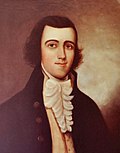
Richard B. Lee
(Chantilly) | Pro-Administration | March 4, 1789 –
March 3, 1793 | 1st
2nd | Elected in 1789.
Re-elected in 1790.
Redistricted to the 17th district . |

Francis Preston
(Abingdon) | Anti-Administration | March 4, 1793 –
March 3, 1795 | 3rd
4th | Elected in 1793.
Results were challenged but upheld.
Re-elected in 1795.
Retired. |
| Democratic-Republican | March 4, 1795 –
March 3, 1797 |
Abram Trigg
(Montgomery County) | Democratic-Republican | March 4, 1797 –
March 3, 1803 | 5th
6th
7th | Elected in 1797.
Re-elected in 1799.
Re-elected in 1801.
Redistricted to the 6th district . |

David Holmes
(Winchester) | Democratic-Republican | March 4, 1803 –
March 3, 1809 | 8th
9th
10th | Redistricted from the 2nd district and re-elected in 1803.
Re-elected in 1805.
Re-elected in 1807.
Retired. |
Jacob Swoope
(Staunton) | Federalist | March 4, 1809 –
March 3, 1811 | 11th | Elected in 1809.
Retired. |
William McCoy
(Franklin) | Democratic-Republican | March 4, 1811 –
March 3, 1823 | 12th
13th
14th
15th
16th
17th | Elected in 1811.
Re-elected in 1813.
Re-elected in 1815.
Re-elected in 1817.
Re-elected in 1819.
Re-elected in 1821.
Redistricted to the 19th district . |
Mark Alexander
(Lombardy Grove) | Democratic-Republican | March 4, 1823 –
March 3, 1825 | 18th
19th
20th
21st
22nd | Redistricted from the 18th district and re-elected in 1823.
Re-elected in 1825.
Re-elected in 1827.
Re-elected in 1829.
Re-elected in 1831.
Retired. |
| Jackson | March 4, 1825 –
March 3, 1833 |
James Gholson
(Percivals) | Anti-Jackson | March 4, 1833 –
March 3, 1835 | 23rd | Elected in 1833.
Lost re-election. |

George Dromgoole
(Cholsonville) | Jackson | March 4, 1835 –
March 3, 1837 | 24th
25th
26th | Elected in 1835.
Re-elected in 1837.
Re-elected in 1839.
Retired. |
| Democratic | March 4, 1837 –
March 3, 1841 |
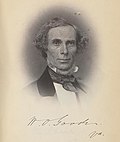
William Goode
(Boydton) | Democratic | March 4, 1841 –
March 3, 1843 | 27th | Elected in 1841.
Retired. |
Edmund W. Hubard
(Curdsville) | Democratic | March 4, 1843 –
March 3, 1847 | 28th
29th | Redistricted from the 5th district and re-elected in 1843.
Re-elected in 1845.
Retired. |

Thomas S. Bocock
(Appomattox) | Democratic | March 4, 1847 –
March 3, 1853 | 30th
31st
32nd | Elected in 1847.
Re-elected in 1849.
Re-elected in 1851.
Redistricted to the 5th district . |

William Goode
(Boydton) | Democratic | March 4, 1853 –
July 3, 1859 | 33rd
34th
35th
36th | Elected in 1853.
Re-elected in 1855.
Re-elected in 1857.
Died. |
| Vacant | July 3, 1859 –
December 6, 1859 | 36th | |

Roger Pryor
(Petersburg) | Democratic | December 7, 1859 –
March 3, 1861 | Elected to finish Goode's term.
Re-elected in 1859.
Resigned. |
| District inactive | March 4, 1861 –
January 25, 1870 | 36th
37th
38th
39th
40th
41st | Civil War and Reconstruction |
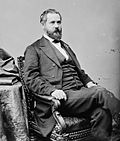
George Booker
(Martinsville) | Conservative | January 26, 1870 –
March 3, 1871 | 41st | Elected in 1870.
Lost re-election. |

William H. H. Stowell
(Burkeville) | Republican | March 4, 1871 –
March 3, 1877 | 42nd
43rd
44th | Elected in 1870.
Re-elected in 1872.
Re-elected in 1874.
Retired. |
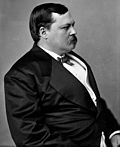
Joseph Jorgensen
(Petersburg) | Republican | March 4, 1877 –
March 3, 1883 | 45th
46th
47th | Elected in 1876.
Re-elected in 1878.
Re-elected in 1880.
Retired. |
Benjamin Hooper
(Farmville) | Readjuster | March 4, 1883 –
March 3, 1885 | 48th | Elected in 1882.
Lost re-election. |
James Brady
(Petersburg) | Republican | March 4, 1885 –
March 3, 1887 | 49th | Elected in 1884.
Retired. |
William E. Gaines
(Burkeville) | Republican | March 4, 1887 –
March 3, 1889 | 50th | Elected in 1886.
Retired. |
Edward Venable
(Petersburg) | Democratic | March 4, 1889 –
September 23, 1890 | 51st | Election invalidated. |

John Langston
(Petersburg) | Republican | September 23, 1890 –
March 3, 1891 | 51st | Elected in 1890.
Lost re-election. |

James F. Epes
(Blackstone) | Democratic | March 4, 1891 –
March 3, 1895 | 52nd
53rd | Elected in 1890.
Re-elected in 1892.
Retired. |

William McKenney
(Petersburg) | Democratic | March 4, 1895 –
May 2, 1896 | 54th | Election invalidated |

Robert Thorp
(Boydton) | Republican | May 2, 1896 –
March 3, 1897 | 54th | Elected in 1896.
Lost re-election. |
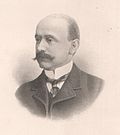
Sydney Epes
(Blackstone) | Democratic | March 4, 1897 –
March 23, 1898 | 55th | Election invalidated. |

Robert Thorp
(Boydton) | Republican | March 23, 1898 –
March 3, 1899 | 55th | Elected in 1898.
Lost re-election. |

Sydney Epes
(Blackstone) | Democratic | March 4, 1899 –
March 3, 1900 | 56th | Elected in 1898.
Died. |
| Vacant | March 4, 1900 –
April 18, 1900 | |

Francis Lassiter
(Petersburg) | Democratic | April 19, 1900 –
March 3, 1903 | 56th
57th | Elected to finish Epes's term.
Re-elected in 1900.
Lost re-election. |
Robert G. Southall
(Amelia) | Democratic | March 4, 1903 –
March 3, 1907 | 58th
59th | Elected in 1902.
Re-elected in 1904.
Lost re-election. |

Francis Lassiter
(Petersburg) | Democratic | March 4, 1907 –
October 31, 1909 | 60th
61st | Elected in 1906.
Re-elected in 1908.
Died. |
| Vacant | November 1, 1909 –
March 7, 1910 | 61st | |
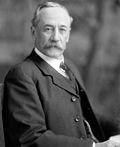
Robert Turnbull
(Lawrenceville) | Democratic | March 8, 1910 –
March 3, 1913 | 61st
62nd | Elected to finish Lassiter's term.
Re-elected in 1910.
Lost re-election. |
Walter Watson
(Jennings Ordinary) | Democratic | March 4, 1913 –
December 24, 1919 | 63rd
64th
65th
66th | Elected in 1912.
Re-elected in 1914.
Re-elected in 1916.
Re-elected in 1918.
Died. |
| Vacant | December 25, 1919 –
April 26, 1920 | 66th | |
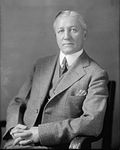
Patrick Drewry
(Petersburg) | Democratic | April 27, 1920 –
March 3, 1933 | 66th
67th
68th
69th
70th
71st
72nd | Elected to finish Watson's term.
Re-elected in 1920.
Re-elected in 1922.
Re-elected in 1924.
Re-elected in 1926.
Re-elected in 1928.
Re-elected in 1930.
Redistricted to the at-large seat . |
| District inactive | March 4, 1933 –
January 3, 1935 | 73rd | |

Patrick Drewry
(Petersburg) | Democratic | January 3, 1935 –
December 21, 1947 | 74th
75th
76th
77th
78th
79th
80th | Elected in 1934.
Re-elected in 1936.
Re-elected in 1938.
Re-elected in 1940.
Re-elected in 1942.
Re-elected in 1944.
Re-elected in 1946.
Died. |
| Vacant | December 21, 1947 –
February 17, 1948 | 80th | |

Watkins Abbitt
(Appomattox) | Democratic | February 17, 1948 –
January 3, 1973 | 80th
81st
82nd
83rd
84th
85th
86th
87th
88th
89th
90th
91st
92nd | Elected to finish Drewry's term.
Re-elected in 1948.
Re-elected in 1950.
Re-elected in 1952.
Re-elected in 1954.
Re-elected in 1956.
Re-elected in 1958.
Re-elected in 1960.
Re-elected in 1962.
Re-elected in 1964.
Re-elected in 1966.
Re-elected in 1968.
Re-elected in 1970.
Retired. |

Robert Daniel
(Prince George) | Republican | January 3, 1973 –
January 3, 1983 | 93rd
94th
95th
96th
97th | Elected in 1972.
Re-elected in 1974.
Re-elected in 1976.
Re-elected in 1978.
Re-elected in 1980.
Lost re-election. |
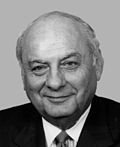
Norman Sisisky
(Petersburg) | Democratic | January 3, 1983 –
March 29, 2001 | 98th
99th
100th
101st
102nd
103rd
104th
105th
106th
107th | Elected in 1982.
Re-elected in 1984.
Re-elected in 1986.
Re-elected in 1988.
Re-elected in 1990.
Re-elected in 1992.
Re-elected in 1994.
Re-elected in 1996.
Re-elected in 1998.
Re-elected in 2000.
Died. |
| Vacant | March 29, 2001 –
June 19, 2001 | 107th | |

Randy Forbes
(Chesapeake) | Republican | June 19, 2001 –
January 3, 2017 | 107th
108th
109th
110th
111th
112th
113th
114th | Elected to finish Sisisky's term.
Re-elected in 2002.
Re-elected in 2004.
Re-elected in 2006.
Re-elected in 2008.
Re-elected in 2010.
Re-elected in 2012.
Re-elected in 2014.
Redistricted to the 2nd district and lost renomination. |
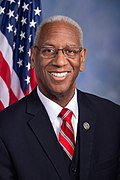
Donald McEachin
(Richmond) | Democratic | January 3, 2017 –
November 28, 2022 | 115th
116th
117th | Elected in 2016.
Re-elected in 2018.
Re-elected in 2020.
Re-elected in 2022, but died before next term began. |
| Vacant | November 28, 2022 –
March 7, 2023 | 117th
118th | |
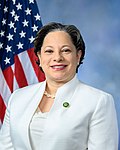
Jennifer McClellan
(Richmond) | Democratic | March 7, 2023 –
present | 118th
119th | Elected to finish McEachin's term.
Re-elected in 2024. |





























